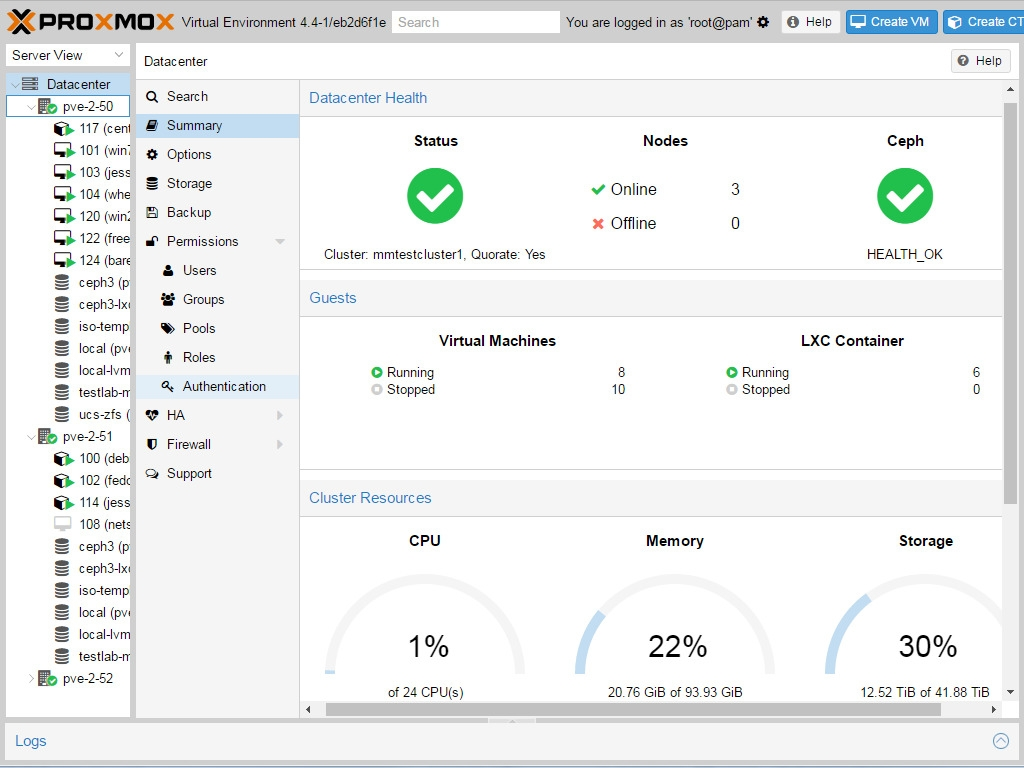Either self-hosted or cloud, I assume many of you keep a server around for personal things. And I’m curious about the cool stuff you’ve got running on your personal servers.
What services do you host? Any unique stuff? Do you interact with it through ssh, termux, web server?
Nextcloud, Syncthing, PeerTube, Vaultwarden, Gitea (+drone, drone-qemu, gitea-pages), Wireguard, FreshRSS
Pi-hole DNS and dhcp + home assistant and a bunch of other related containers.
I use Docker and (currently) VMware and host whatever I need for as long (or short) as I need it.
This allows me to keep everything separate and isolated and prevents incompatible stuff interacting with each other. In addition, after I’m done with a test, I can dispose of the experiment without needing to track down spurious files or impacting another project.
I also use this to run desktop software by only giving a container access to the specific files I want it to access.
I’m in the process of moving this to AWS, so I have less hardware in my office whilst gaining more flexibility and accessibility from alternative locations.
The ultimate aim is a minimal laptop with a terminal and a browser to access what I need from wherever I am.
One side effect of this will be the opportunity to make some of my stuff public if I want to without needing to start from scratch, just updating permissions will achieve that.
One step at a time :)
Plex, transmission, home assistant, some SSH tunnels, some custom home automation endpoints.
Self hosted retro private EQemu, I also use the server for Jellyfin, just for music.
I used to use it to control my window AC from work too, but sadly the smart plug I use for that died over the winter, was nice to pair with those tuya-alternative through http since my cheapo phone needs to save all the storage it can. Its on a very old rig, so I’m always impressed that it still works.
You might like to search this community, and also \c\self_hosted, since this question gets asked a lot.
For me:
- Audiobookshelf
- Navidrome
- FreshRss
- Jellyfin
- Forgejo
- Memos
- Planka
- File Storage
- Immich
- Pihole
- Syncthing
- Dockge
I created two things - CodeNotes (for snippets) and a lil’ Weather app myself 'cause I didn’t like what I found out there.
deleted by creator
I love it. I do use it on mobile, in my browser too. I’ve been meaning too see what other clients are available for android.
This might be a better question for !selfhosted
Two old HP thin client PCs configured as 4TB SFTP file servers using vsftpd on Debian. Each one uses software RAID 1 with both an NVMe and SATA SSD internally, and are in two separate locations with a cron job which syncs one to the other every 24 hours.
People who actually know what they are doing will probably find this silly, but I had fun and learned a lot setting it up.
If it works reliably who cares?
deleted by creator
I am using lftp and mirror. One server functions as the “main” server, which mirrors the backup server to itself once per day at a specific time (they both run 24/7 so I set it to run very early in the morning when it is unlikely to be accessed).
In my crontab I have:
# # * * * /usr/bin/lftp -e "mirror -eRv [folder path on main server] [folder path on backup server]; quit;" sftp://[user]@[address of backup server]:[port number]deleted by creator
No problem! Glad I could be of help, and best of luck on your project.
Headless server accessed via SSH. Hosting Jellyfin, FoundryVTT, a Discord bot that I just mess around with, and also use it to run an IRC client inside screen.
Just Jellyfin and modded Minecraft right now. Nothing super interesting, but great fun.
I’m using SSH to interact with the Minecraft server in tmux, and the web interface for Jellyfin.
Homework worth of TBs
On my Raspberry Pi 4 4gb with encrypted sd is:
- pihole
- wireguard server
- vaultwarden
- cloudflare ddns
- nginx proxy manager
- my website
- ntfy server
- findmydevice server
- watchtower
Pi is overkill for this kind of job. Load average is only 0.7% and ram usage is only 400M
can you tell us how you got this running with an encrypted SD card?
That was really hard to do. I created a note for myself and I will also publish it on my website. You can also decrypt the sd using fido2 hardware key (I have a nitrokey). If you don’t need that just skip steps that are for fido2.
The note:
Download the image.
Format SD card to new DOS table:
- Boot: 512M 0c W95 FAT32 (LBA)
- Root: 83 Linux
As root:
xz -d 2023-12-11-raspios-bookworm-arm64-lite.img.xz losetup -fP 2023-12-11-raspios-bookworm-arm64-lite.img dd if=/dev/loop0p1 of=/dev/mmcblk0p1 bs=1M cryptsetup luksFormat --type=luks2 --cipher=xchacha20,aes-adiantum-plain64 /dev/mmcblk0p2 systemd-cryptenroll --fido2-device=auto /dev/mmcblk0p2 cryptsetup open /dev/mmcblk0p2 root dd if=/dev/loop0p2 of=/dev/mapper/root bs=1M e2fsck -f /dev/mapper/root resize2fs -f /dev/mapper/root mount /dev/mapper/root /mnt mount /dev/mmcblk0p1 /mnt/boot/firmware arch-chroot /mntIn chroot:
apt update && apt full-upgrade -y && apt autoremove -y && apt install cryptsetup-initramfs fido2-tools jq debhelper git vim -y git clone https://github.com/bertogg/fido2luks && cd fido2luks fakeroot debian/rules binary && sudo apt install ../fido2luks*.deb cd .. && rm -rf fido2luks*Edit
/etc/crypttab:root /dev/mmcblk0p2 none luks,keyscript=/lib/fido2luks/keyscript.shEdit
/etc/fstab:/dev/mmcblk0p1 /boot/firmware vfat defaults 0 2 /dev/mapper/root / ext4 defaults,noatime 0 1Change
rootto/dev/mapper/rootand addcryptdevice=/dev/mmcblk0p2:rootto/boot/firmware/cmdline.txt.PATH="$PATH:/sbin" update-initramfs -uExit chroot and finish!
umount -R /mntThank you so much! will make a note of this
findmydevice server
What server are you running for this?
Minetest server, arr suite, plex, Pihole, calibre, homesssistant, Nextcloud.
Interact with it through a Homarr webpage and all of it is virtualized through proxmox.
I’ve been a software engineer for 8 years and I’ve had my own Jellyfin server (and before that, Plex) set up for 4 years on a server that I built myself.
Despite this, I don’t have a damn clue what “virtualized through Proxmox” means any time I read it.
They are just running things in VMs. They may even have a cluster with some sort of high availability.

Or containers, but lxc instead of docker-like. They’re like full VMs in operation but super lightweight. Perfect for some needs.
I personally find that LXC really isn’t better than a VM.
You use Homarr with Proxmox? I should look into that.
On an orangepi5, managed via webUIs and SSH: -Home Assistant and associated programs (notably zigbee2mqtt and nodered) -Pihole
8TB Unraid NAS managed via Unraid’s webui -Whooole *arr stack -Jellyfin -Mealie
Thinking about nextcloud for the next one.
I settled on a Fujitsu Q920 with 16 GB of RAM and a 1 TB SSD. Runs FreeBSD 14.1 and each service has its own Jail.
Services:
DNSmasq - local DNS and adblocker Wireguard Navidrome MPD - Media server Vaultwarden - password save Radicale - cardav and caldav server TinyRSS - RSS aggregator Zabbix - server and service monitoring Postgresql Gitea - git repository Emby - jellyfin alternative Mariadb Bhyve VM with Debian running 2 apps (invoiceplane and leantime) which use a quite old php version and I never had time to port to Freebsd.
A second machine that starts daily and creates a backup of machine 1 by using ZFS autobackup.
Nothing fancy but it does what I need.













